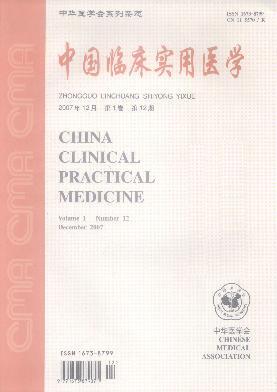Early microsurgery via transsylvian-transinsular approach in hypertensive intracerebral hematomas in the basal ganglia
引用次数: 0
Abstract
Objective To investigate the clinical value of early microsurgery of hypertensive intracerebral hematomas in the basal ganglia via transsylvian-transinsular and cortical fistula approach. Methods A retrospective study was performed on 122 cases of patients with hypertensive intracerebral hematomas in the basal ganglia who were admitted from January 2013 to December 2016.According to different surgical approaches, the patients were divided into the cortical fistula approach (CFA) group and the transsylvian-transinsular approach (TTA) group.In the CFA group, the ipsilateral left middle temporal gyrus was used as the hematoma cavity; in the TTA group, the ipsilateral lateral fissure and the upper lobe of the insular cortex reached the hematoma cavity.After the operation, the patients were examined by brain CT to determine the clearance rate of the hematoma, and the NICU admission time and the daily living ability score were compared between the two groups. Results The differences of postoperative hematoma clearance rate, NICU admission time and ADL between the two groups were statistically significant (P<0.05). Conclusion Compared with the cortical fistula approach, the transsylvian-transinsular approach has higher hematoma clearance rate, shorter NICU admission time and better prognosis, which is worth of clinical promotion. Key words: Transsylvian-transinsular approach; Cortical fistula approach; Microsurgery; Hypertension; Intracerebral hematoma; Basal ganglia基底神经节高血压性脑出血早期显微手术经经西林-经岛入路
目的探讨经西林-经岛-皮质瘘入路早期显微手术治疗基底节区高血压脑出血的临床价值。方法对2013年1月至2016年12月收治的122例基底节区高血压脑出血患者进行回顾性分析。根据手术入路的不同,将患者分为皮质瘘入路(CFA)组和transsylvia -transinsular入路(TTA)组。CFA组以同侧左侧颞中回作为血肿腔;TTA组同侧外侧裂及岛叶皮质上叶到达血肿腔。术后行颅脑CT检查,确定血肿清除率,比较两组患儿NICU入院时间及日常生活能力评分。结果两组患者术后血肿清除率、NICU入院时间、ADL差异均有统计学意义(P<0.05)。结论与皮质瘘入路相比,经西林-经岛入路血肿清除率更高,入住NICU时间更短,预后更好,值得临床推广。关键词:跨大西洋-跨岛屿路径;皮质瘘入路;显微外科;高血压;颅内血肿;基底神经节
本文章由计算机程序翻译,如有差异,请以英文原文为准。
求助全文
约1分钟内获得全文
求助全文

 求助内容:
求助内容: 应助结果提醒方式:
应助结果提醒方式:


